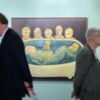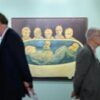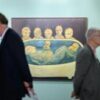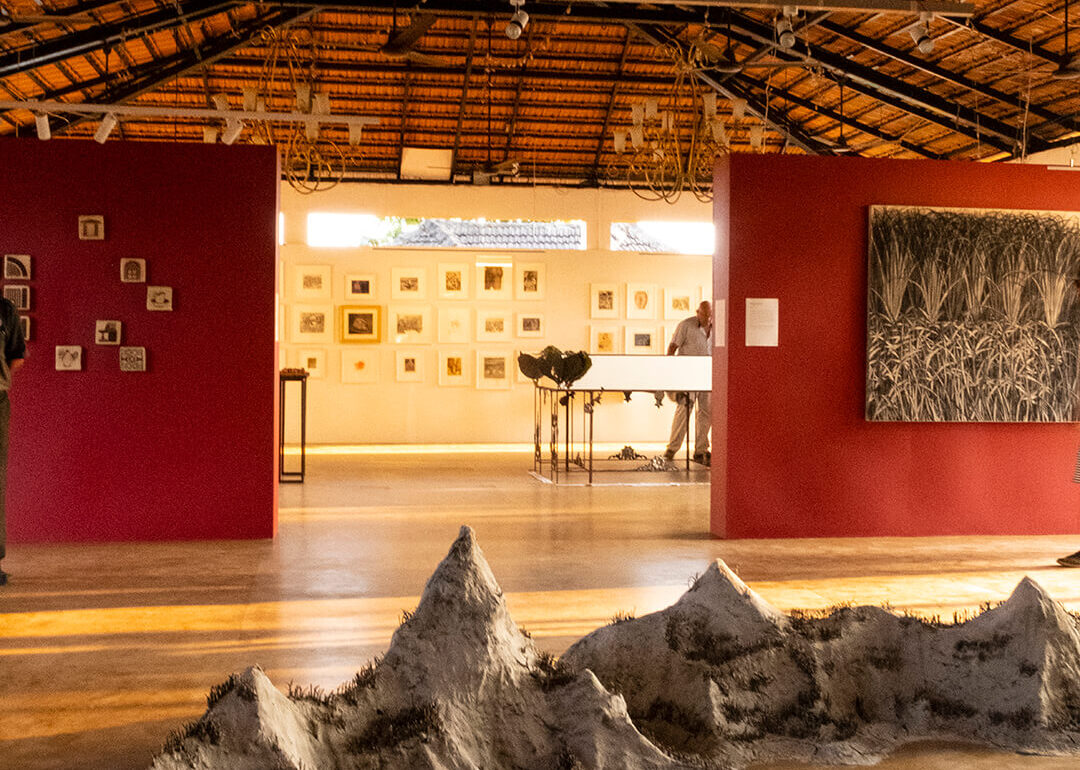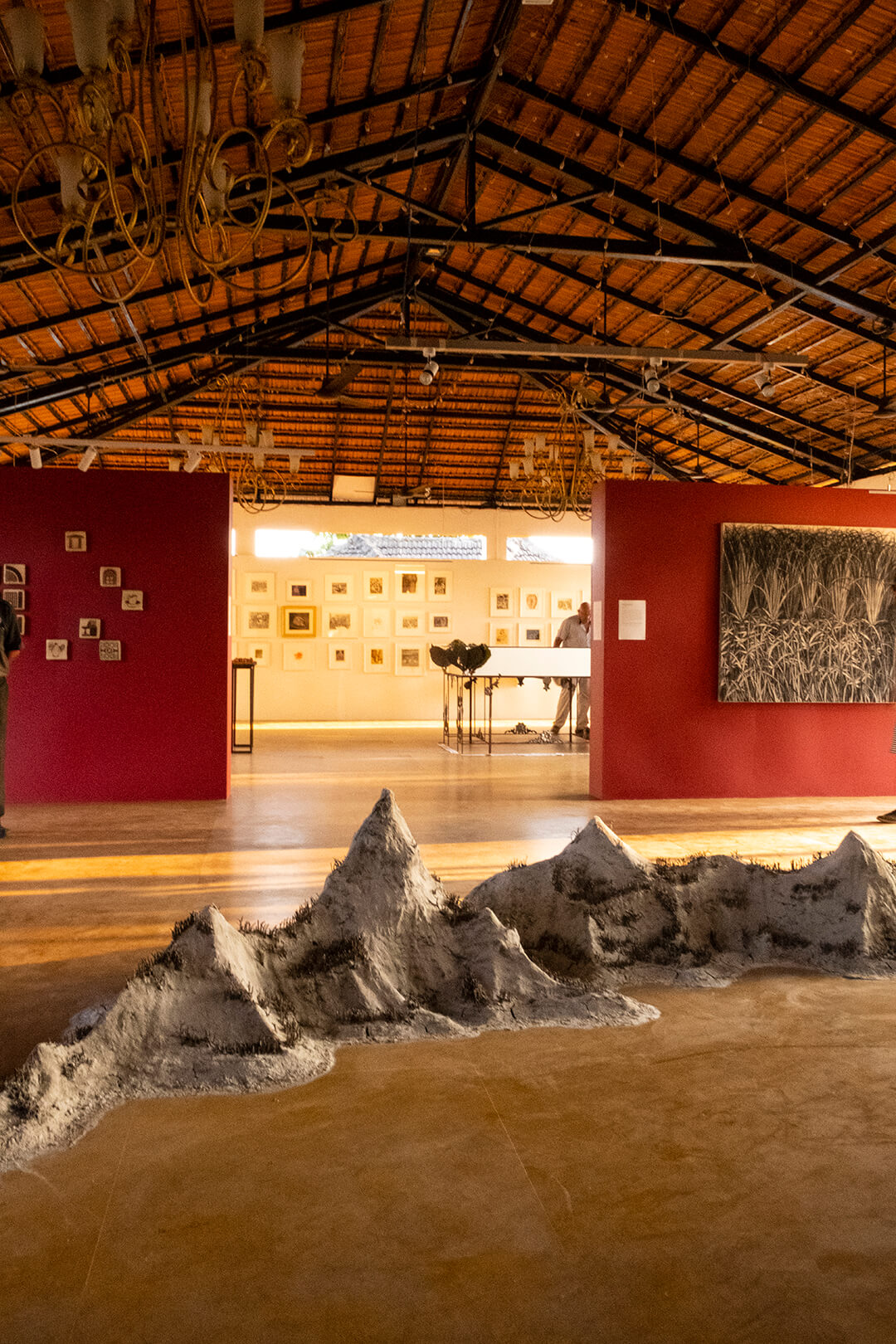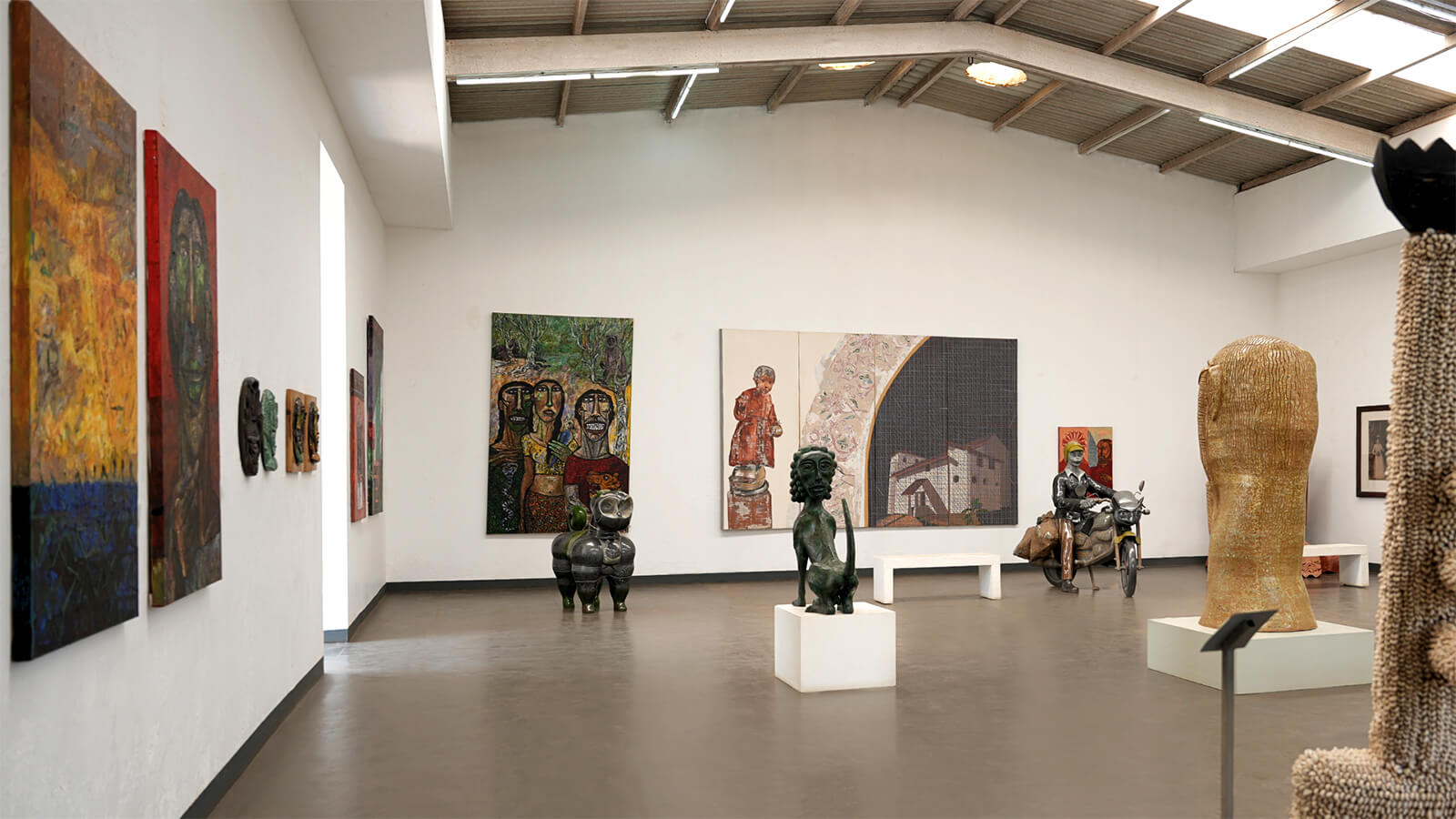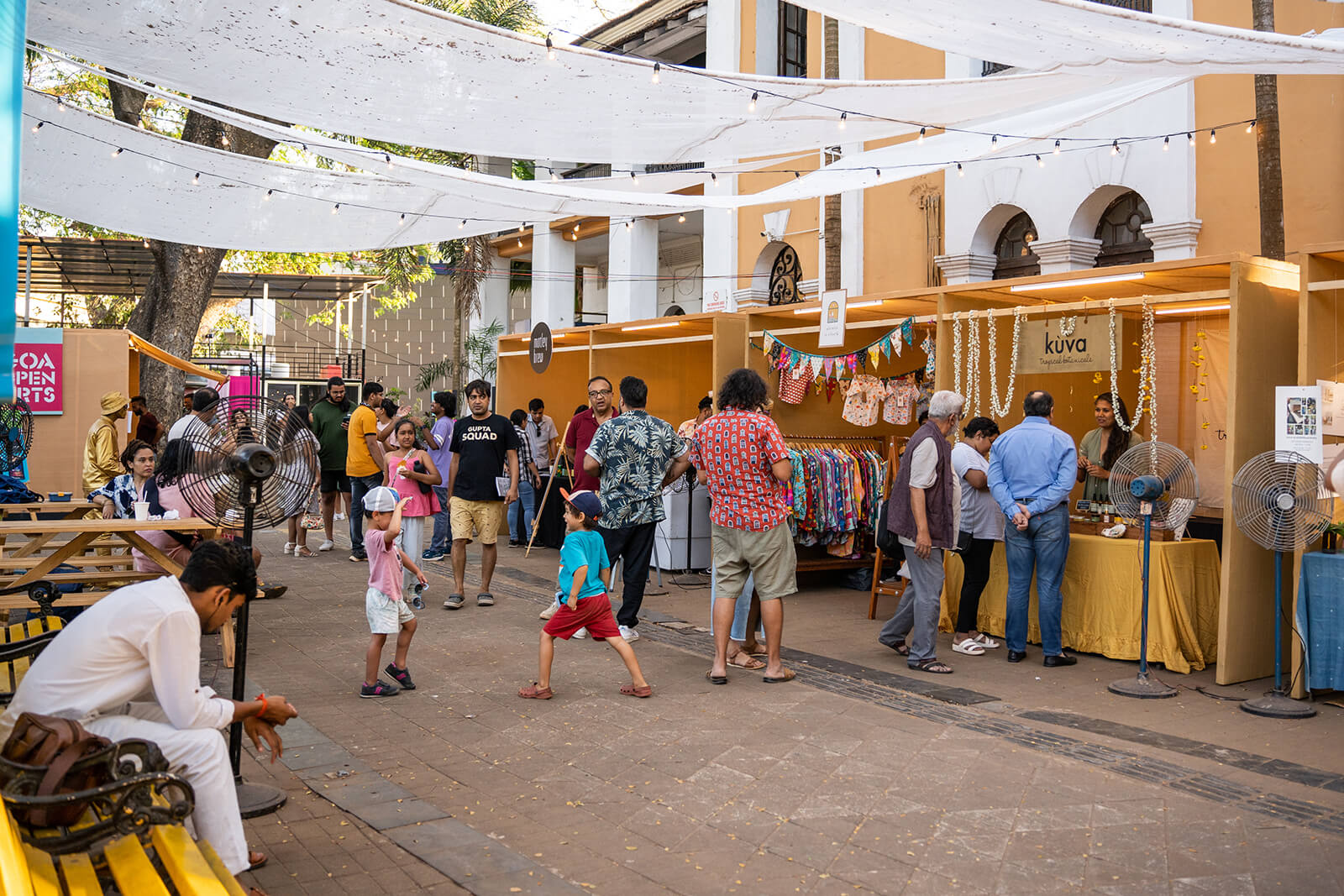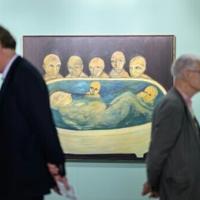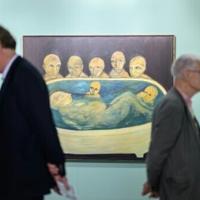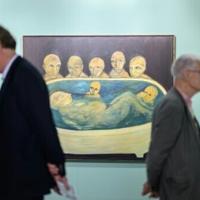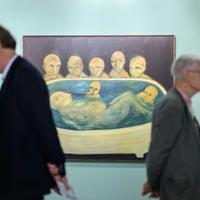In February 2020, a few weeks before the announcement of the lockdown in March, Goa Open Arts held the inaugural edition of their festival. Featuring works by artists based in Goa as well as Goan music, food and drink at a wedding venue in Nagoa, the festival’s mood articulated a global exhibition format in an informal vernacular that has come to be seen as an ideal mixture in Goa’s arts, entertainment and hospitality sector today.
In the years that followed—slowed briefly by the COVID-19 pandemic—the state’s art infrastructure became better integrated with adjacent sectors. It developed a more pragmatic and accessible art market and reduced its reliance on the conventional closed-off circuits that characterise metropolitan art scenes. With the announcement that Goa-based artist Nikhil Chopra and HH Art Spaces are the curators for the upcoming 2025–26 edition of the Kochi-Muziris Biennale, it seems appropriate to take stock of how the Goan art scene has come up in recent years and where it may be headed.
Recently there has been a flurry of activity in the Indian art world and much of this wave has found its way to Goa’s art circuit. What used to be a largely seasonal art crowd that formed around the annual Serendipity Arts Festival has become a settled population of artists and curators, encouraging more exhibitions, film screenings, workshops and lectures during the rest of the year. The simultaneous real estate boom in Goa has attracted the kind of year-round financial speculation and interest that the seasonal and mercurial tourism sector can’t, but whether this will pave the way for new collectors to invest in Goan art remains to be seen. It is certainly pushing the numbers up, bringing more money and more people with disposable income into the state, of which a fraction may find themselves drawn to the art scene and the possibility of collecting. Sharada Kerkar, COO of the Museum of Goa, notes to STIR that “most sales go towards interior decoration for second homes, new hotels and real estate investments” rather than the collections of serious patrons. As a result, much of the new investments in art have been limited to conventionally saleable works; but Kerkar has also observed that, while the gallery presence has been limited in terms of the market, “new organisations like Memesys Studios and Arthshila have been offering artists, designers and filmmakers other kinds of opportunities outside the art market”.
The financial and cultural savvy of these new and few buyers is critical. Goa’s nascent art scene is not yet ripe for explosive returns on investment, but the community that has formed around institutions like Goa Open Arts and Museum of Goa, as well as galleries like Sunaparanta Goa Centre for the Arts and Arthshila, are spaces where patrons can engage more closely and thoughtfully with artists. Sunaparanta is the oldest gallery in Goa, supported by such collectors and often the ideal choice for art events and exhibitions. HH Art Spaces, a mix of residency, studio and exhibition spaces in Aldona, often guides mid-career artists from outside Goa who are interested in engaging with Goa’s uniquely convivial global-local atmosphere. Over the years, HH has transitioned from a space of fervent experimentation for performance and conceptual artists to a more sustained, laboratory-like para-institution with its own curatorial and production team. As an institution, the Museum of Goa is relatively recent but has quickly become a platform for several of Goa’s new migrant artists, writers and other practitioners to hold talks and workshops. The audiences for these events are not prospective buyers, but their presence is a sign of an art scene that is vibrant, accessible and relevant to a larger number of people.
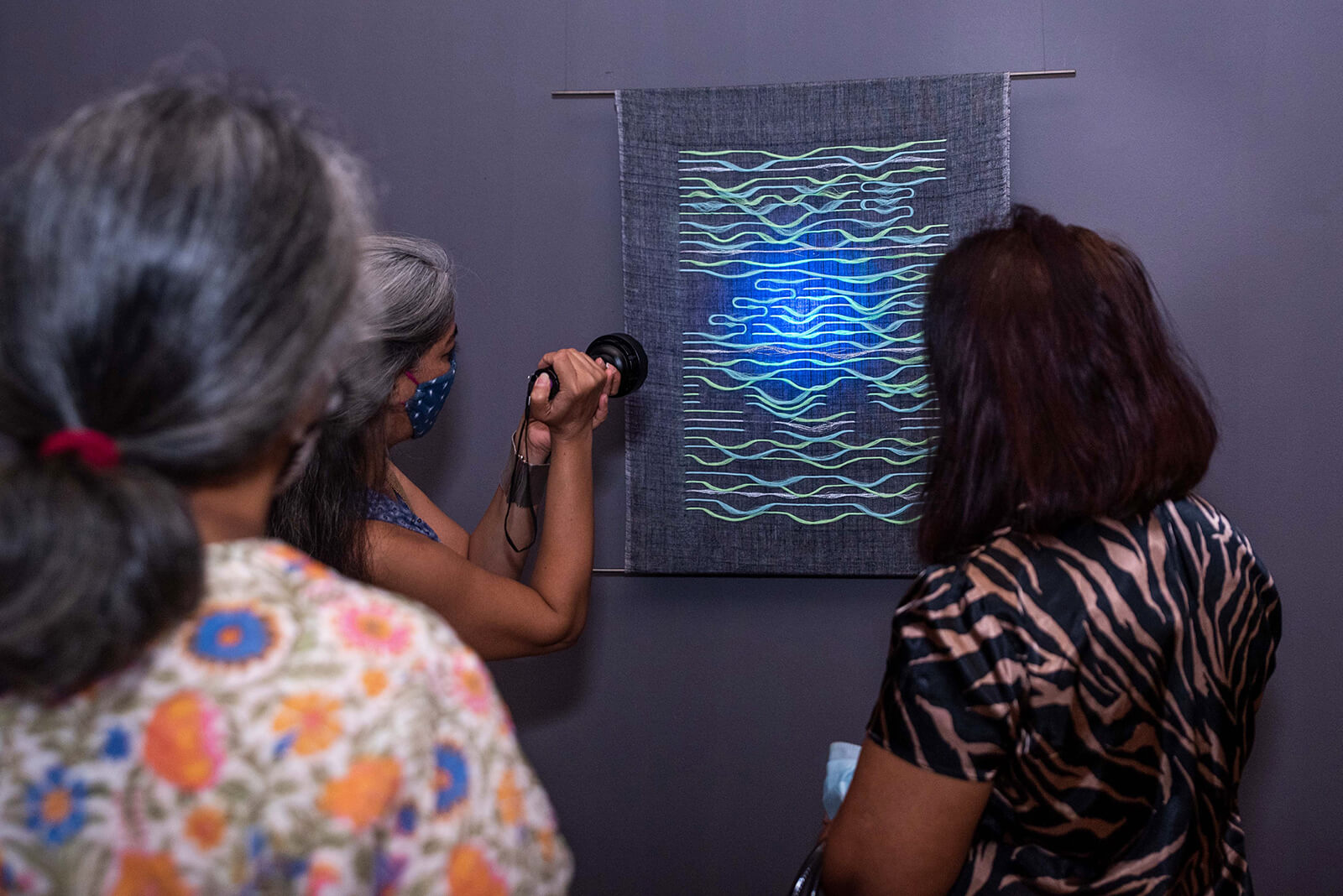
Many of those involved feel that Goa’s cultural and social atmosphere is better suited to a farm-to-table kind of market supported by a small but heavily involved community rather than the mainstream speculative model where a great gulf can emerge between buyer and artist. Apart from their festival, Goa Open Arts often holds exhibitions featuring emerging or mid-career artists’ work, with the specific intent of attracting new collectors with competitive pricing. The idea is that pairing collectors and artists from the same generation would hopefully allow them both to encounter the market on an even footing. The steadily expanding settler population in the state is largely under 40, with a sufficiently large income to invest, even if tentatively, in the art market.
A community-oriented scene also has greater permeability between what we would call the fine art circuit—galleries, museums and markets—and closely related industries like design, fashion and film. Studios and other hybrid spaces have created alternative paths for creative practitioners. Artists’ work is often exhibited and sold in festival-like pop-up markets organised by Offbeat Goa and Maker’s Asylum. Filmmakers often collaborate through studios like Quicksand and Memesys and performance artists frequently present their work alongside more conventional forms like dance, music and Goa’s growing drag scene. While such studios and events aren’t conducive to all practices, they definitely allow artists a more realistic way of selling their work and seeing potential alternative markets up close.
Gallery representation for artists is effectively non-existent in Goa, where galleries and patrons are few, but this hasn’t been a significant barrier for artists trying to earn a living. In an art world where galleries are often seen as extractive and creatively limiting towards young artists, Goa’s practitioners have found other options. A representative from HH Art Spaces has also indicated that while preparing for the upcoming edition of the Kochi-Muziris Biennale, the organisation has made it a point to include a substantial number of artists who do not have gallery representation, which is being seen as less of a necessity in the evolving art market and cultural discourse. It is important to remember that because artists often get their regular income from working in related fields—graphic design, illustration, writing—much of mainstream art already originates at the intersection of these fields. A substantial portion of Goa’s emerging art scene is composed of practitioners who primarily work in design, photography, film or fashion, only occasionally extending their reach to an art audience when opportunities like Serendipity or Goa Open Arts present themselves. It’s worth noting that peripheral practitioners like these are more prominent in Goa’s art scene than they would be in New Delhi or Mumbai. Those with a perspective informed by the broader Indian art market feel that this is only a temporary phenomenon. They view these art-adjacent practitioners as a symptom of a fledgling art infrastructure that is in the process of expanding to provide platforms for career artists and curators.
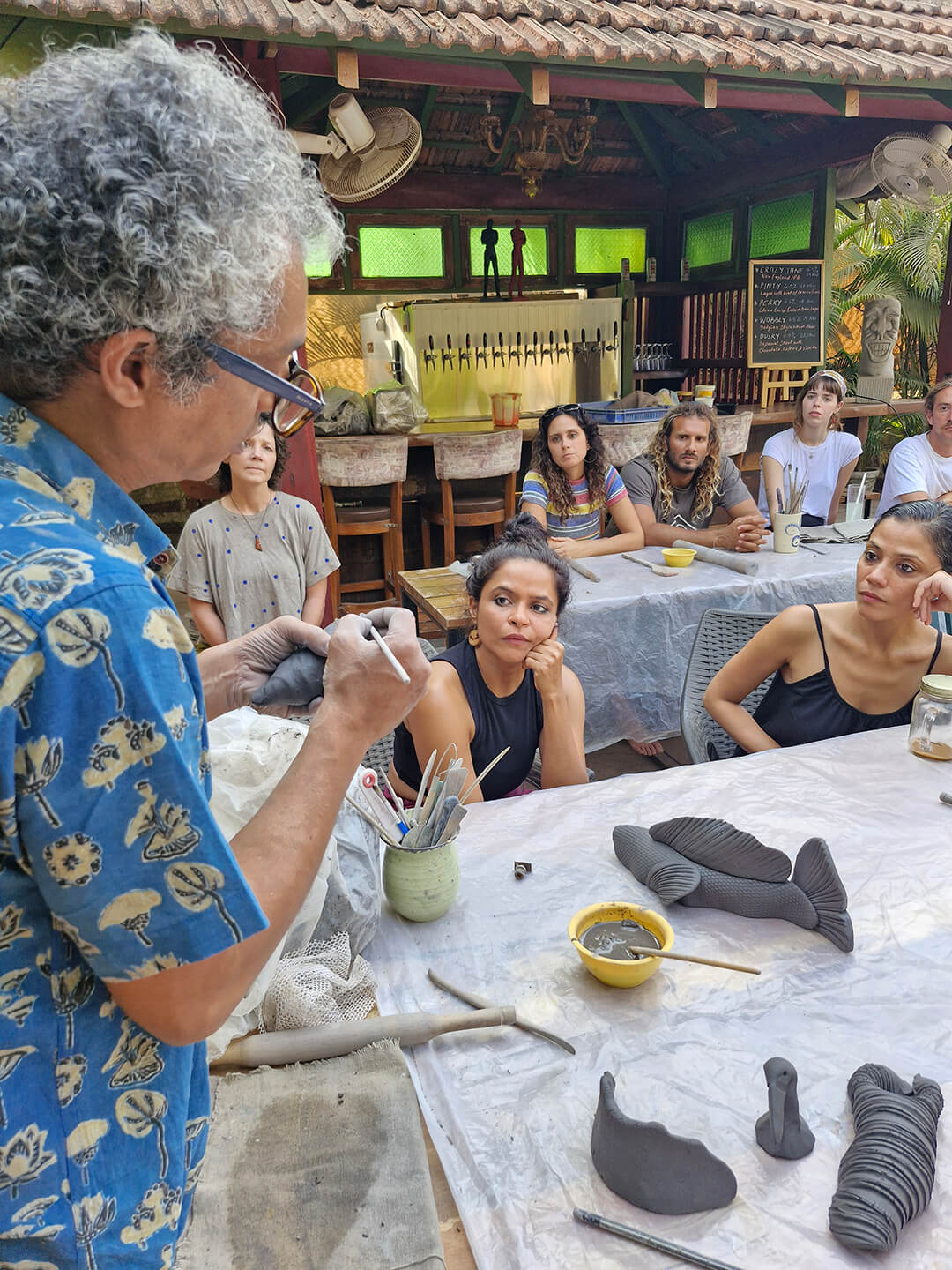
While Goa has a fairly large number of local artists already—many introduced to the idea of an art practice through the state’s festivals, craft traditions and architecture—the scant commercial infrastructure has been a barrier to making art a viable career in the state. On the other hand, an abundance of gallery spaces and collectors in metropolitan cities has not translated to steady cash flow for the majority of India’s artists. Most relocated artists living in Goa rarely exhibit their work there, as the state’s new but distinctive art scene is often thought of as an appendage of a region-centric cultural narrative, implying the risk that by exhibiting too often in Goa one might become too localised for the ever-present global audience, or that it would be somehow disingenuous to insert oneself in the local scene without becoming sufficiently and irreversibly invested in it. Meanwhile, urban centres contain spaces that are relatively more white cube and exhibiting there doesn’t come with the pressure of adjusting work to a particular context.
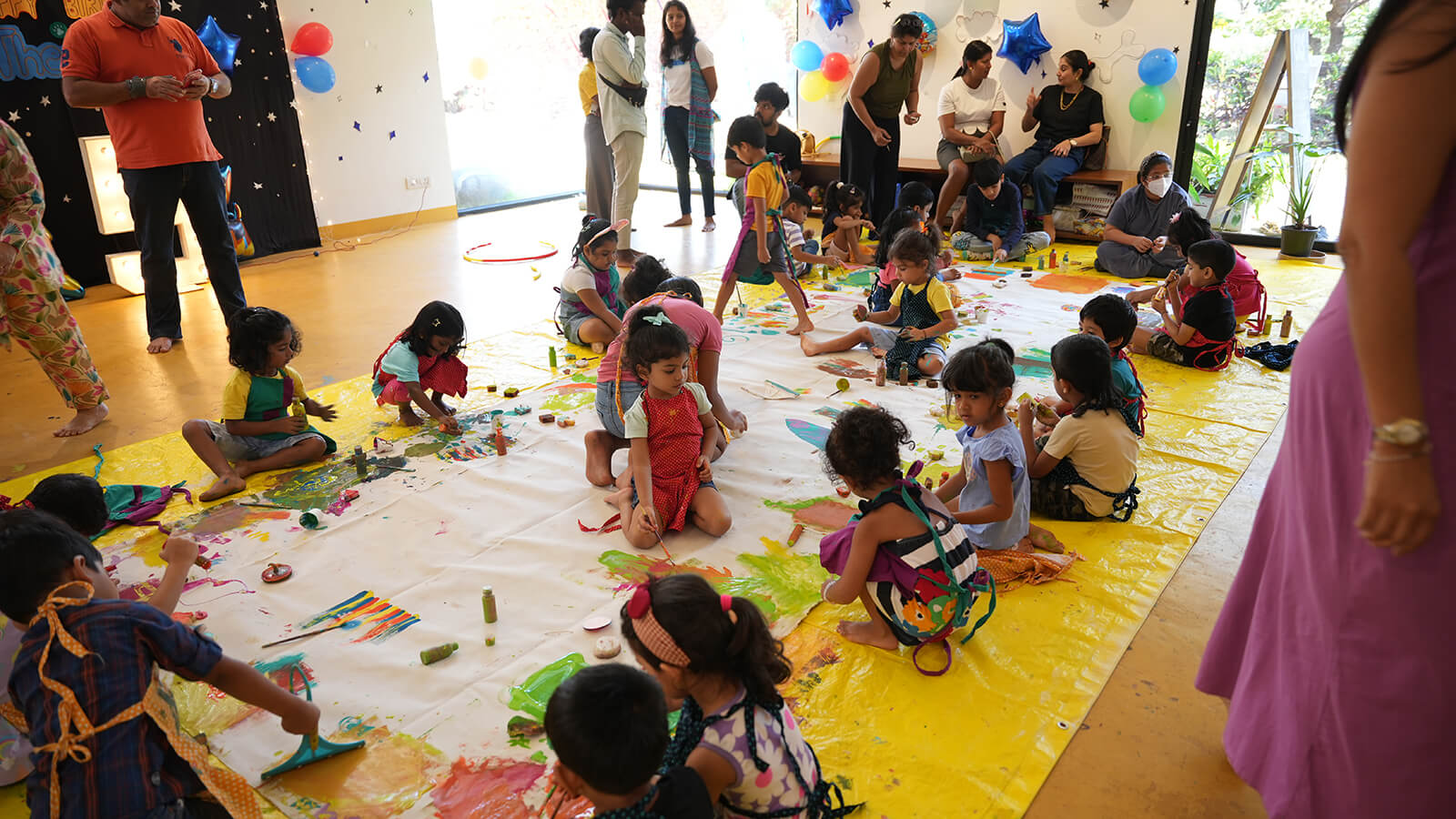
Of course, most exhibitions in Goa do not actually involve Goa-specific themes or discourse, but there is certainly some truth to the idea that art is mobilised in the service of a larger identity-framing project. Softer examples of this include exhibitions by Goa Open Arts, some commissioned projects by the Serendipity Arts Festival and talks about Goan art and design history at the Museum of Goa. In these spaces, you’ll find a realistic mix of local and outside views and people, but groups like Goa Artists Collective take a more firm Goa-first stance, foregrounding issues central to life in a rapidly changing Goa, told exclusively by Goan artists. Any point on this sliding scale—from white cube artists to those with an entirely local focus—comes with some compromise when one thinks about the Indian art market and Goa’s art community. Artists can certainly feel restricted or potentially even pigeonholed if their success is made in service of an inward-looking community, but at the same time, a loose contextual grounding is what can make an art scene distinctive.
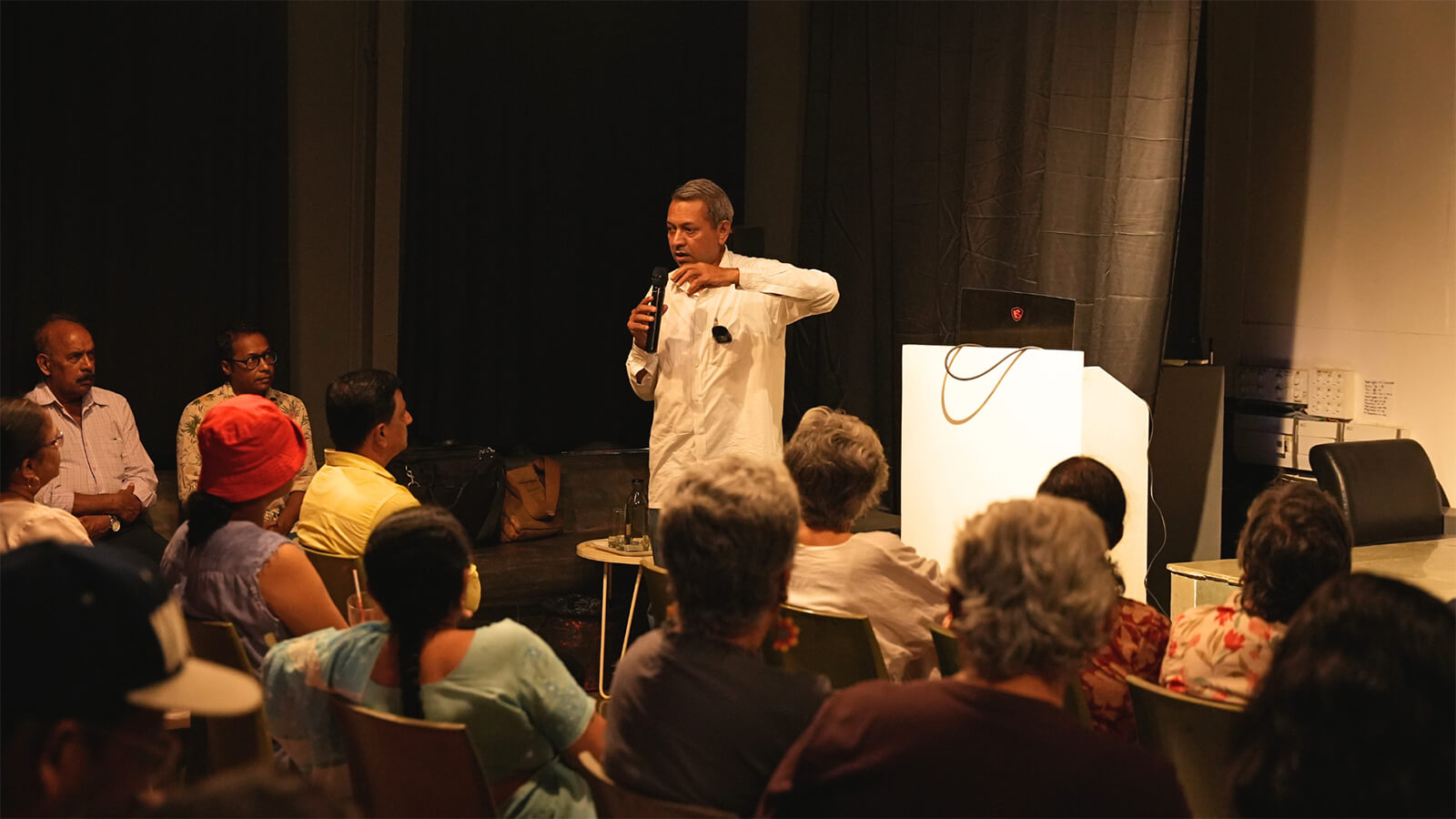
Goa’s concern with migration, particularly the influx of young, affluent, people from north India and its accompanying gentrification of otherwise remote villages, has been a sore point in the state’s politics for several years now. The art scene can’t realistically exclude migrant artists, curators or administrative staff, as they bring the necessary savvy of the larger Indian and global art markets, but at the same time, it’s valuable to remember that adaptation should go both ways, with artists localising their work and immersing themselves in Goan cultural and political discourse. Sitara Chowfla of Goa Open Arts observed that “while there is no politics that we have encountereds, ‘settler’ artists do inhabit a slightly different world as well as a world view — language and cultural differences are very apparent in the divide”.
To a large extent, the art scene in Goa has grown organically and circumvented the usual commercial hurdles by adapting enterprisingly and pragmatically to the real estate and tourism markets that already bring in a number of casual buyers and investors. While local patrons are few, this may change in the long run as Goa’s institutions and galleries grow in number and reputation.
(The views and opinions expressed here are those of the author(s) and do not necessarily reflect the official position of STIR or its editors.)
This post was originally published on this site be sure to check out more of their content

